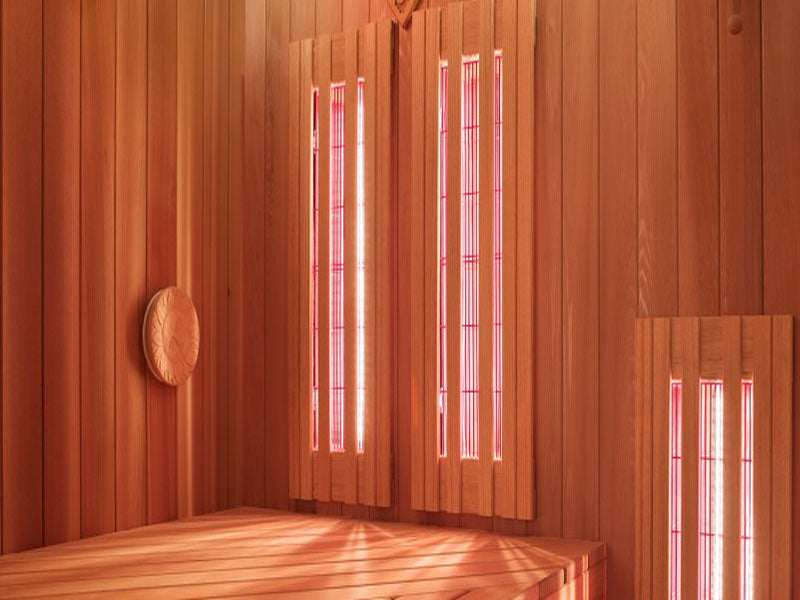Health Benefits of Hot Sauna, Cold Plunge
•Posted on July 20 2023

As your skin temperature increases, sauna-goers experience a "fight or flight" response, resulting in a heightened sense of alertness, reduced pain perception and an elevated mood, Timmerman said in an article for The North American Sauna Society. When you follow up a sauna with a plunge in cold water or snow, he explained, your adrenaline raises, as well.
Beyond adrenaline, Timmerman said the hot sauna, cold plunge practice can improve pain and inflammation from rheumatoid arthritis — a disease that's often worsened by sauna visits that aren't followed by some cold.
Health benefits, including boosting circulation and releasing toxins, are reasons upscale ocean and river cruise company Viking Cruises, now has hot and cold spa experiences aboard its ocean ships. The second reason? The family-owned company has strong ties to its Norwegian heritage and traditions — including the Nordic hot sauna, cold plunge experience.
While the variety of hot and cold spa options are enticing, few excite guests as much as the elaborate snow grotto. This surreal, snowy room immerses cruise-goers in the real Nordic bathing tradition. The stone-walled grotto has actual snow that's produced similarly to the artificial powder at ski resorts.
Now, I'm not one for rolling through snow in the nude, but even I couldn't resist trying the snow grotto (in a swimsuit) while cruising up to Norway. It's about the size of a walk-in closet, with a snow-covered bench for those brave enough to sit. (I stood.) The grotto's purple lighting and snowy, forest décor make it feel like a movie set from "Frozen" — one of the many reasons I kept going back. I alternated between shivering in the grotto then sweating in the hot tub and sauna for at least two hours, two days in a row. Did I feel toxin-free by the end of it? Not really. But I did feel relaxed, pampered, and much more ready for the Norwegian snow ahead.
Of course, the snow in Viking's grotto isn't actually real snow. The system combines compressed air and water to form ice crystals, then blows the snow into the chilly grotto, which is temperature controlled to maintain the snow's consistency. Spa staff de-frosts and generates new snow every few days to keep the grotto looking its best.
Health Risks of Hot Sauna, Cold Plunge
While the toasty sauna followed by cold plunge — or hut tub followed by snow grotto — is rejuvenating and safe for most, it's not for everyone (a fact Viking makes clear to guests). In fact, those with heart conditions should stick to milder spa experiences.
Cold receptors in the face and scalp respond to the quick drop in temperature. This stimulates the "diving reflex," a complex cardio respiratory reaction. It can cause shortness of breath, decreased cardiac output and rapid decrease in pulse.
What are the benefits of using a sauna?
As your skin temperature increases, sauna-goers experience a "fight or flight" response, resulting in a heightened sense of alertness, reduced pain perception, and an elevated mood. Health benefits also include lower blood pressure, reduced inflammation, reduced risk of dementia, improved heart function, lower risk of stroke, better mental health, increased recovery from muscle soreness, and much more.
Is a sauna or steam room better?
There are a number of similarities between the two. They both improve circulation, reduce pain, and help with relaxation. A steam room, however, really helps the sinuses and alleviates congestion. They also feel very different, as saunas offer dry heat while a steam room is wet heat.
Do you burn calories in a sauna?
Yes, as your core body temperature rises, you burn calories at a rate about 1.5 to 2 times faster than if you were sitting elsewhere. For example, the average 180 pound woman would lose around 30 to 40 calories every 15 minutes in a sauna. However, don't try to use a sauna to actually achieve weight loss, since most of what you lose in a sauna is water.
How long should you stay in a sauna for?
Beginners should use a sauna for 5 to 10 minutes at a time. Eventually, you can increase your time, but cap it at 20 minutes to avoid dehydration.
What is a cold shock practice?
Cold therapy has been around forever in the world of professional athletics, but the mainstream population has only caught on in the last few years. A cold plunge practice involves submerging the body in very cold water for roughly two to 10 minutes. Benefits include boosts to the immune, lymphatic, circulatory, and digestive systems. It can take the form of cold showers, ice baths, polar bear dips, and cold-shocking after time in a hot tub or sauna.
Comments
0 Comments
Leave a Comment